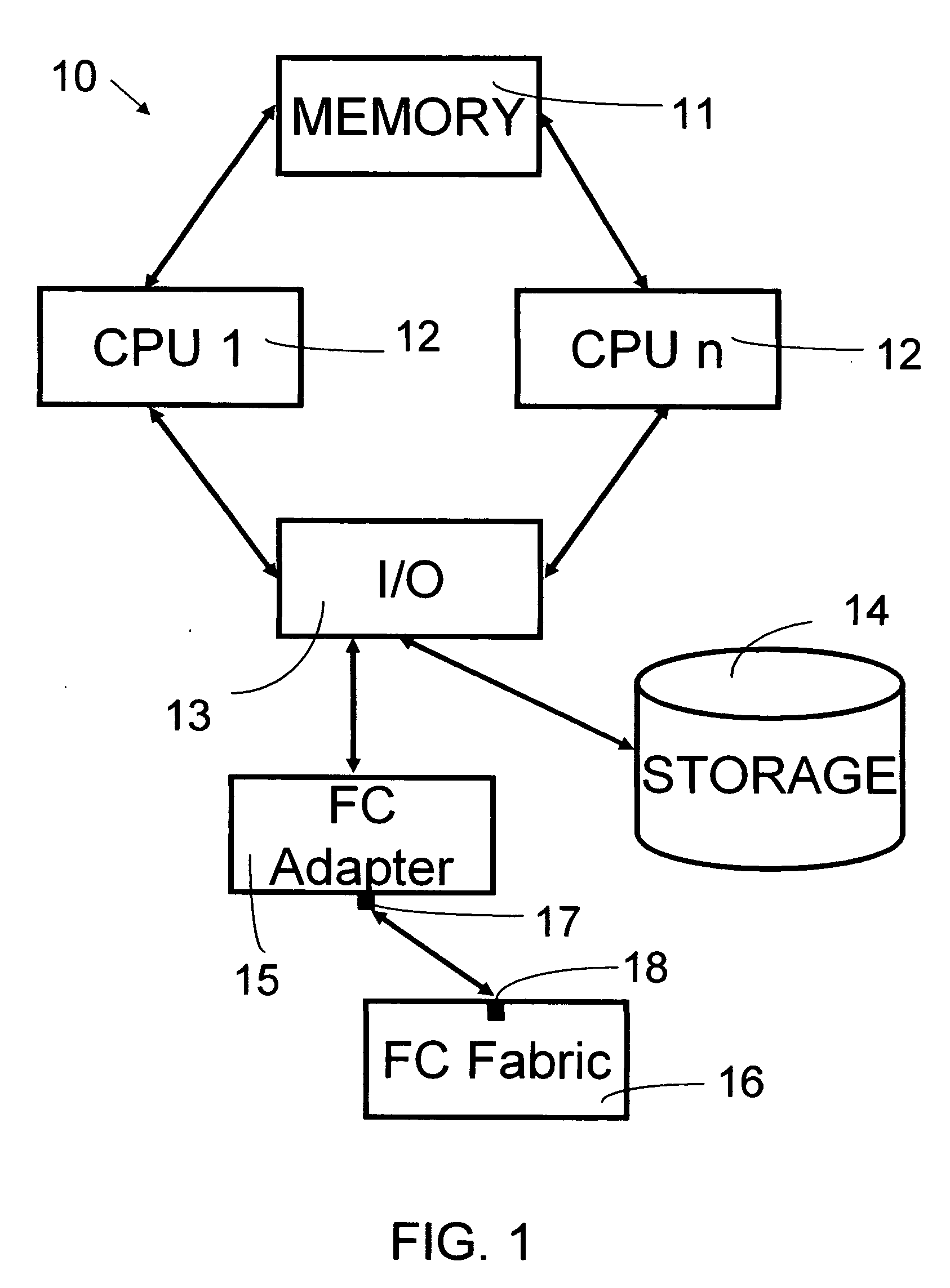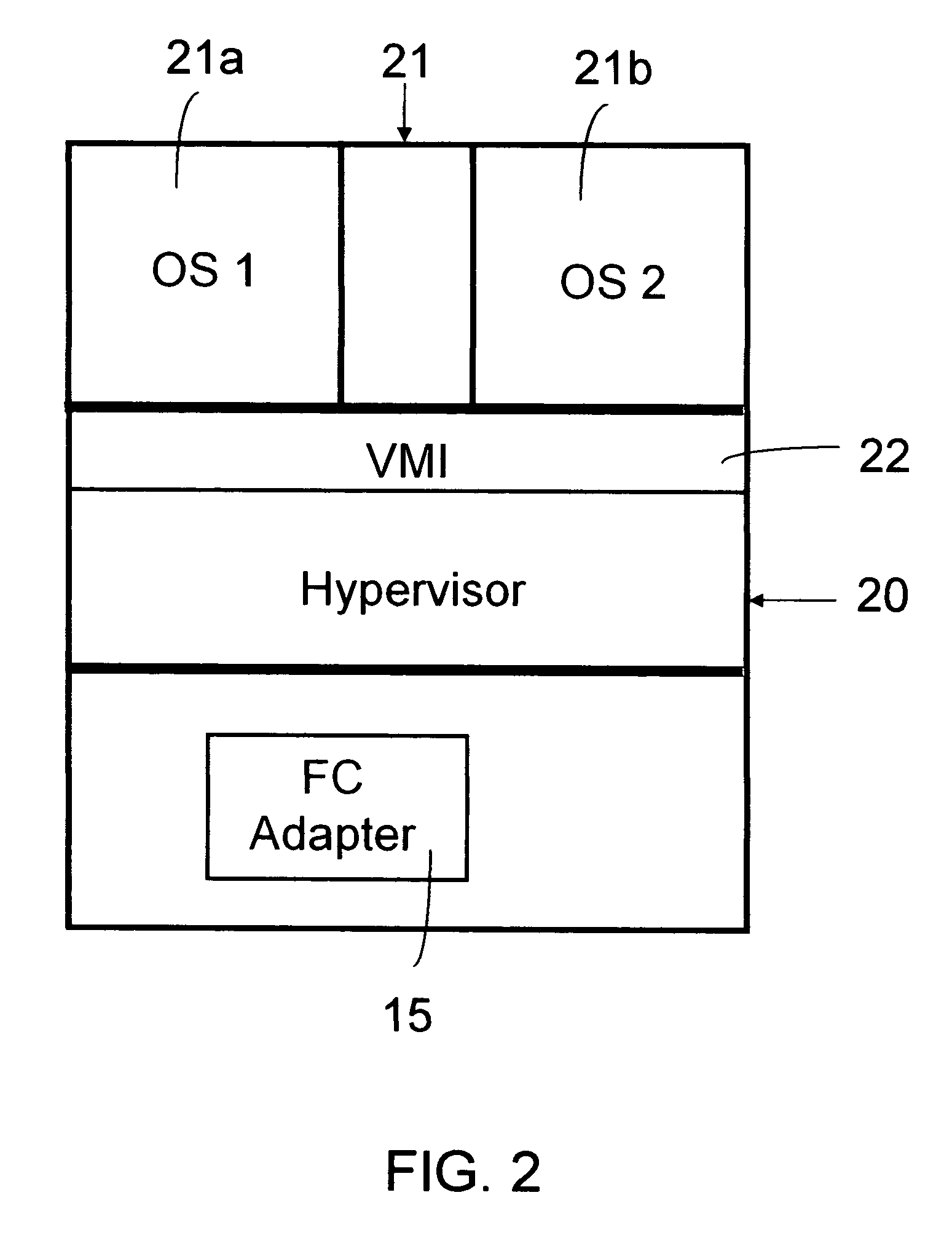System, detecting method and program
a detection method and system technology, applied in the field of systems, detecting methods and programs, can solve the problems of not being able to initiate a fc transaction to a particular instance, adding additional complexity to the san management and administration, and not being able to ensure the correct scsi status and sense data handling
- Summary
- Abstract
- Description
- Claims
- Application Information
AI Technical Summary
Benefits of technology
Problems solved by technology
Method used
Image
Examples
Embodiment Construction
[0048]FIG. 1 illustrates a computer system 10 in which the present invention can be used. A shared memory 11 is coupled to one or more Central Processing Units (CPUs) 12. These CPUs 12 are also coupled to an I / O subsystem 13. A separate storage device 14 can also be accessed by the CPUs 12. The content of the storage device 14 is persistent: It survives a power off / power-on cycle. A FC adapter 15 is accessible for the CPUs 12 via the I / O subsystem 13, and this FC adapter 15 is connected to a FC fabric 16. The FC adapter 15 has a physical N_Port 17 that is connected to an F_Port 18 of the fabric 16.
[0049] As shown in FIG. 2, the computer system is running a hypervisor 20 on the CPUs 12, which controls multiple OS instances 21 that are executed concurrently. The hypervisor 20 emulates the FC adapter 15; the OS instances 21 perceive the normal FC adapter interface, but in fact have I / O requests processed through the hypervisor 20 in order to access the FC adapter 15. The component of ...
PUM
 Login to View More
Login to View More Abstract
Description
Claims
Application Information
 Login to View More
Login to View More - R&D
- Intellectual Property
- Life Sciences
- Materials
- Tech Scout
- Unparalleled Data Quality
- Higher Quality Content
- 60% Fewer Hallucinations
Browse by: Latest US Patents, China's latest patents, Technical Efficacy Thesaurus, Application Domain, Technology Topic, Popular Technical Reports.
© 2025 PatSnap. All rights reserved.Legal|Privacy policy|Modern Slavery Act Transparency Statement|Sitemap|About US| Contact US: help@patsnap.com



